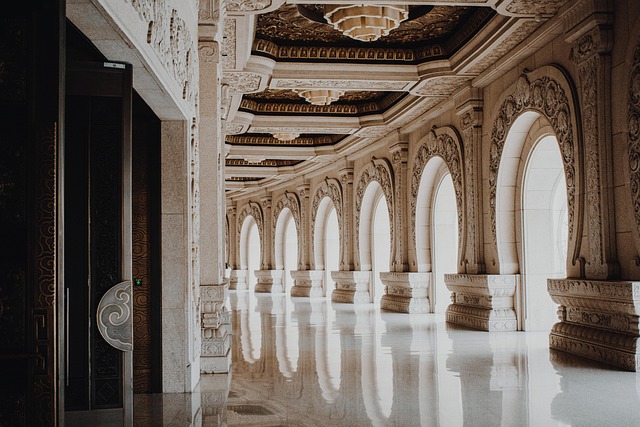In the world of photography, the quest for depth, atmosphere, and a sense of cinematic storytelling often feels like chasing an elusive dream. While many images capture a moment perfectly, they sometimes miss that subtle layer of drama that makes a scene feel alive. The anamorphic lens, originally a tool reserved for the film industry, has begun to infiltrate the everyday photographer’s kit, offering a unique blend of optical physics and creative possibility. This article explores how the anamorphic lens works, its optical underpinnings, and how it can transform ordinary photographs into narratives that echo the grandeur of the silver screen.
The Basics of Anamorphic Lens Design
At its core, an anamorphic lens squeezes the image horizontally during capture. The camera sensor records a compressed frame, which is then later stretched back to its original aspect ratio. This process creates a wide, panoramic view while preserving the vertical composition, a technique that was a staple in early 20th‑century cinema. The key optical components include a cylindrical element or a set of lenses arranged to create the horizontal compression, often accompanied by a special anamorphic hood to manage vignetting and light spill.
The cylindrical lens introduces a distinct anamorphic squeeze factor, usually expressed as 1.33×, 1.5×, or even 2×. A 1.33× squeeze expands the horizontal field of view by 33 percent, allowing a photographer to capture more landscape or architectural detail without changing the focal length. Because the sensor’s vertical dimension remains unchanged, the resulting image retains a natural vertical sense of depth, which contributes to that “cinematic” feel.
- Horizontal compression yields a wider perspective.
- Vertical dimension stays true to the sensor, preserving depth.
- Special vignetting and lens flare add a nostalgic look.
Optical Nuances: Bokeh, Distortion, and Light Handling
One of the most celebrated attributes of anamorphic lenses is their distinctive bokeh. Unlike round lenses that produce circular out‑of‑focus highlights, anamorphic lenses render them as elongated ellipses. This elliptical glow is a hallmark of the “cinematic” aesthetic and can give portraits and street scenes an almost dreamlike softness.
“The elliptical bokeh is not a flaw; it’s an expression of the lens’s intent to emulate the visual language of motion picture.” – Unnamed Optical Engineer
However, the optical trade‑offs are real. The cylindrical element can introduce subtle barrel or pincushion distortion, especially towards the edges. Photographers must be mindful of composition, ensuring that key subjects sit in the central band of the frame where distortion is minimal. Additionally, anamorphic lenses often exhibit a characteristic lens flare—an oval glow that can be used creatively or suppressed with the right hood or polarizing filter.
- Recognize and leverage elliptical bokeh.
- Position subjects centrally to avoid distortion.
- Use hoods or polarizers to control flare.
Translating Cinema into Still Photography
Everyday photographers may wonder how a tool designed for 35‑mm film can enrich their modern digital images. The answer lies in the way anamorphic lenses manipulate perspective and light. By compressing the horizontal axis, the lens expands the scene’s apparent width, capturing expansive cityscapes or sweeping landscapes without sacrificing the intimate vertical relationships between subjects.
When paired with a moderate focal length—say, a 50 mm on a full‑frame sensor—the anamorphic squeeze yields a perspective similar to a 70–90 mm lens in terms of depth of field, but with a wider field of view. This combination gives street photographers the ability to capture crowded scenes with a sense of spaciousness, while still maintaining a shallow depth of field for portraits. The result is a photograph that feels like a single frame extracted from a widescreen movie, complete with atmospheric lens flare and subtle compression that guides the viewer’s eye.
Practical Workflow for the Modern Photographer
For many, the primary hurdle is the camera’s need to “de‑squeeze” the image. Fortunately, most post‑processing software now includes anamorphic de‑squeeze presets. The workflow typically involves:
- Capture: Shoot in raw format to preserve maximum dynamic range.
- De‑squeeze: Apply a 1.33× or 1.5× horizontal stretch in your chosen editing program.
- Crop: Adjust the frame to a desired aspect ratio, often 2.39:1 or 2.55:1 for that classic widescreen look.
- Fine‑tune: Use lens correction tools to reduce distortion and vignetting.
- Color grade: Emulate the tonal palette of cinema—soft contrast, rich shadows, and slightly desaturated midtones.
Many photographers incorporate anamorphic shots into series that mix traditional lenses with anamorphic ones, creating a visual dialogue between standard and cinematic styles. This juxtaposition can be especially powerful in documentary work, where the anamorphic frame accentuates moments of emotional resonance while the regular lens provides context.
Choosing the Right Anamorphic Lens for Your Gear
Today’s market offers a range of anamorphic lenses for mirrorless and DSLR systems. While prime anamorphic lenses provide superior image quality, many photographers opt for anamorphic adapters—small, inexpensive attachments that sit between the camera and a standard lens. These adapters introduce a 1.33× squeeze and are available for a variety of mounts.
When selecting a lens or adapter, consider:
- Mount compatibility with your camera body.
- Maximum aperture—f/2.8 or wider allows better low‑light performance.
- Weight and ergonomics—heavy lenses can strain handheld shooting.
- Budget constraints—adapters are affordable, but prime lenses offer higher fidelity.
For hobbyists just dipping their toes into anamorphic photography, a 1.33× adapter on a 35 mm prime can deliver stunning results without a significant investment. Professional photographers, on the other hand, may seek high‑end anamorphic lenses from manufacturers that specialize in cinema optics, providing immaculate image quality and the signature oval bokeh that enthusiasts crave.
Final Thoughts
The anamorphic lens has evolved from a niche cinematic accessory to a versatile tool that empowers photographers to experiment with depth, perspective, and light. By understanding its optical mechanics and mastering a streamlined workflow, everyday photographers can infuse their images with the grandeur of widescreen storytelling. Whether you’re capturing a quiet morning over a city skyline or the bustling energy of a street scene, the anamorphic lens invites you to see the world not just as it is, but as it could be—a living canvas stretched wide enough to hold your imagination.




